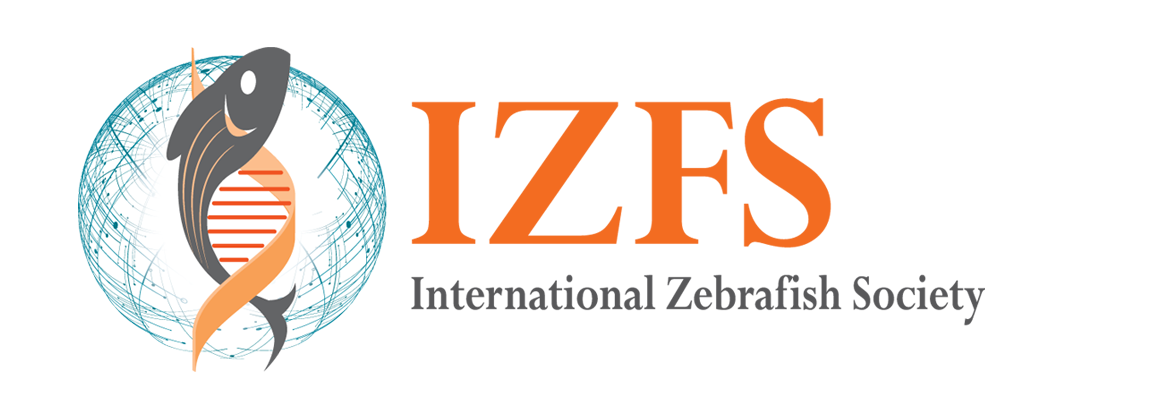Congratulations to the IZFS 2022 Chi-Bin Chien & George Streisinger Award Winners!
2022 Chi-Bin Chien Award Winner, Jared Talbot, PhD, University of Maine, Orono, Maine
Dr. Jared Talbot studies the dynamic signals that control muscle development, from progenitor specification through cell migration, fusion, and differentiation. He began work as an assistant professor in the School of Biology and Ecology at the University of Maine in Fall 2019. Dr. Talbot's zebrafish genetics work began with Ph.D. studies in Charles Kimmel's lab at the University of Oregon. He learned to study muscle from Sharon Amacher, enriched by a robust muscle research community at The Ohio State University. Along the way, Dr. Talbot has developed and distributed protocols, mutant lines, and given hands-on training to many labs in the zebrafish community.
Click here to visit his lab. Click here to visit his department.
2022 George Streisinger Award Winners, Christine Thisse, PhD and Bernard Thisse PhD, University of Virginia, Charlottesville, Virginia

Bernard and Christine Thisse recently retired from their positions of : ‘Directeurs de Recherche au CNRS’ (France) and Professors of Cell Biology and of Biology, University of Viriginia (USA). Molecular biologists and developmental embryologists, they obtained their PhD at LGME (Strasbourg, France, Director: P. Chambon), focusing on the molecular characterization and function of the Drosophila twist gene, essential to the formation of mesoderm at gastrulation. They demonstrated that the transcription of twist is directly activated by the maternal Dorsal morphogen protein showing that the transfer of the maternal information to the zygote involves a cascade of transcriptional activation. The ‘Thisse’ conducted their post-doctoral research in John Postlethwait’s lab (University of Oregon, USA). They built a variety of molecular and genetic tools to study the early development of a novel animal model system, the zebrafish. Both awarded with a CNRS position, they started theirs labs in IGBMC (Strasbourg, France, director: P. Chambon) focusing on understanding the molecular basis on cell fate, signaling and axis formation. They are internationally recognized for their pioneering work on early vertebrate development such as the establishment of the dorso-ventral axis (by BMP2/4/7 morphogens and regulators (FGF3/8, Noggin1, Follistatin1b, Sprouty2/4 and Sef). They also demonstrated that the Nodal signaling pathway is responsible for the graded establishment of cell fates along the antero-posterior axis of the zebrafish embryo and demonstrated Antivin/Lefty1&2 to be competitive inhibitors of Nodal. The ‘Thisse’ identified maternal Wnt8a mRNA as the dorsal determinant, those activity is restricted by maternal Wnt antagonists, Sfrp1a and Frzb and discovered a novel mechanism for regulating the transcriptional outcome of Wnt/β-catenin signaling pathway. They redefined the concept of Spemann Dorsal Organizer by showing that the organizing properties are in fact distributed all along the embryonic margin. At the molecular level, these organizing activities depend on the ratio of activity of two morphogenetic gradients, BMP and Nodal, which are sufficient to instruct uncommitted cells of the zebrafish blastula animal pole and to become organized into a well-developed embryo. More recently, Christine and Bernard made the discovery that the transcription factors and cofactors mediating or regulating the transcriptional outcome of the Hippo pathway control the development and differentiation of the progenitors of the Left-Right organizer and therefore left-Right asymmetry. Finally, they are internationally recognized for having been able to induce extensive embryonic development in vitro from aggregates of mouse embryonic stem cells. This includes formation of the 3 germ layers through a process of gastrulation, differentiation of various tissue and organ primordia (e.g.: notochord, vasculature, neural tube, gut primordia), altogether mimicking the development of a mouse embryo up to mid-gestation.
All along this deep examination of various aspects of early zebrafish embryo development, the ‘Thisse’ developed, as a side project, a ‘molecular anatomy database’, based on high throughput wholemount in situ hybridization, that describes the expression patterns of 2/3 of the genome (more than 50,000 images). This database, deposited in Zfin is heavily used by the scientific community.





